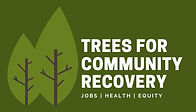
Recognizing how critical trees are important to economic opportunity, public health and climate resilience, Boise, Idaho and Cleveland, Ohio, are two cities taking strides to strategically plant more trees. National League of Cities' Elaine Clegg and Matt Zone delve into how these two communities are working to make tree equity a lived reality:
America is undergoing an awakening about the importance of trees for health, wealth and climate change response in our cities and towns. Trees are not just window dressing for our cities, they are critical infrastructure necessary for a healthy community. The benefits that trees provide are needed in cities of all sizes, from major urban centers to smaller cities dotted across rural America. We need a whole-of-government effort to invest in neighborhood trees and take tangible steps forward to deliver health equity, economic opportunity and climate resilience to help all Americans thrive.
Now is the time for bold leadership and investments in community infrastructure that allow all neighborhoods to access the life-saving benefits of trees. There is a well-known proverb: The best time to plant a tree is 20 years ago; the second-best time to plant a tree is now.
Trees provide major economic benefits and support local green jobs. Trees are a turn-key opportunity ready to employ tens of thousands of our neighbors. The tree care industry is a growing sector that pays family-supporting wages. These local jobs can’t be exported and are suitable for our neighbors across the education spectrum. More than 30,000 forestry positions need to be filled over the next five years, which is sure to grow if we invest in trees. Efforts are currently underway in cities across the country to ensure people who need these opportunities the most can pursue new career pathways into urban forestry.
The next summer heatwave is just around the corner; trees are vital green infrastructure and the most effective means of combating extreme heat, which has devastating effects on local communities. In fact, the temperature in the shade beneath a tree can be up to 45 degrees cooler than nearby unshaded areas. Trees also save money on utility bills – with the right trees in the right place, you can reduce summer air conditioning costs up to 50%. Trees reduce air pollution and childhood asthma rates. They reduce flooding. They increase property values. By almost any quality-of-life measure, they provide significant benefits.
Despite all the benefits trees provide, they are often absent from where they are most needed. A map of tree cover in any city in the United States too often mirrors a map of race and income. Where trees are absent, so are the benefits and the jobs.
Across America, cities are committing to increasing tree equity and ensuring everyone has access to the economic, health and societal benefits of trees...Read More.

コメント